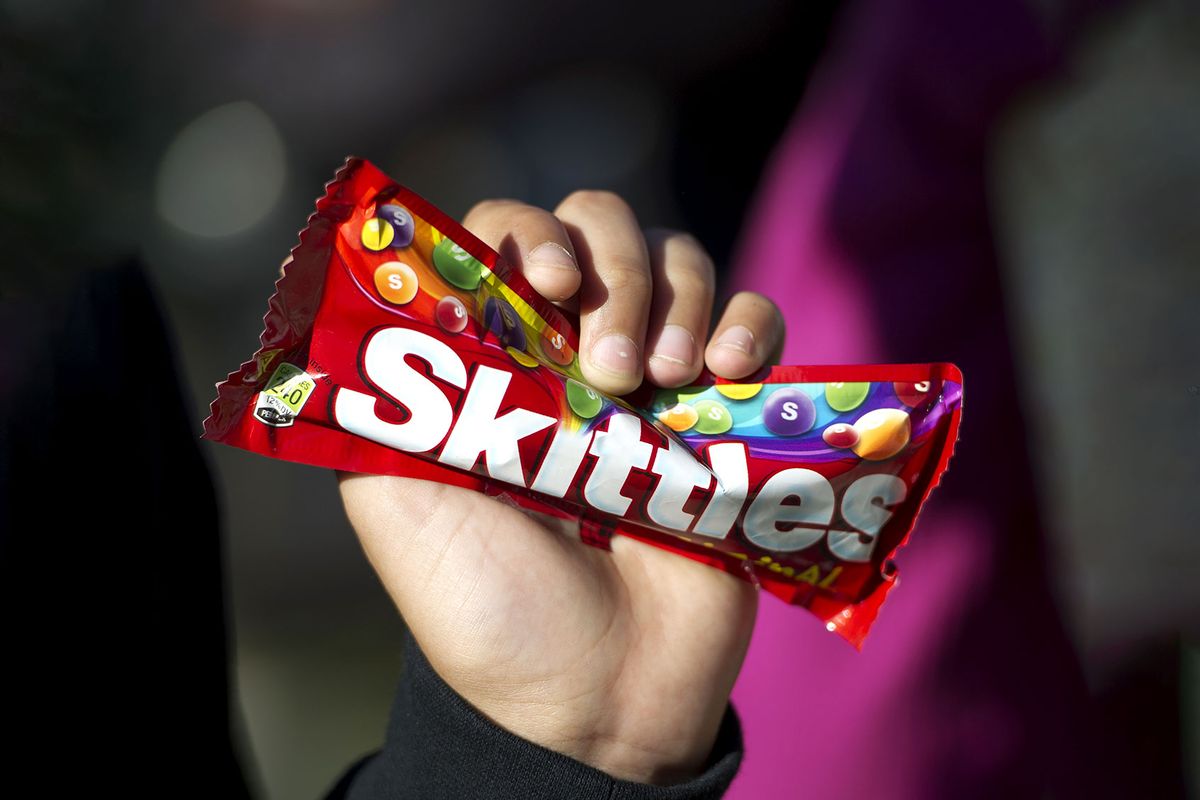Don’t toss your Skittles just yet: California’s latest food ban, explained

California just banned four food additives — and now everyone is talking about what this means for the future of candy.
Referred to as the “Skittles ban” (a bit of a misnomer as the bill won’t actually affect the rainbow candy), this legislation aims to ban brominated vegetable oil, propyl paraben, red dye No. 3 and potassium bromate from food products by 2027. The additives have been linked to risk of cancer and “hyperactivity in children,” according to the new California bill, passed in early September.
Why Is It Called ‘The Skittles Ban’?
An earlier draft of this bill included a fifth additive: titanium dioxide, a food coloring agent that is found in Skittles (it’s what makes that candy coating sooooo smooth). The chemical had been linked to damage in DNA, called genotoxicity.
Additionally, when announcing the passing of the bill, Governor Gavin Newsom used a bag of Skittles that had been “produced in the EU” to demonstrate how food additives are used — or, rather, not used — in other parts of the world. The pairing of the previous version of the bill, coupled with Newsom’s puzzling Skittles example led to the internet glomming onto the rainbow candies as a prized, yet incorrect, example.
What Is Actually Banned?
Strawberry Yoohoo, Brach’s candy corn, some Little Debbie and Hostess products (sorry Cosmic Brownies and Mini Muffins) and Peeps are all going to be impacted by the bill. However, the Environmental Working Group — who, along with Consumer Reports, pushed for the bill — says over 10,000 products could potentially be affected.
Why Now And Why These Products?
California has been a leader in “preventative” banning and extra-cautious labeling of food ingredients. For example, Proposition 65 requires businesses to provide warnings to Californians about significant exposures to chemicals that cause cancer, birth defects or other reproductive harm and it impacts foods ranging from shellfish to protein powders. So, it’s not completely surprising that another new bill would come out of California — but this one has the potential to impact how candies are manufactured throughout the greater US.
Essentially, the ban stems from the fact that these particular additives have not been tested or evaluated by the Food and Drug Administration for about 40 to 50 years. Even so, the FDA has, over the past decades, already limited the use of a couple of these items: brominated vegetable oil and red dye No. 3.
In the ’70s, the FDA announced a limit on the use of brominated vegetable oil. The decision was based on studies conducted in the late ’60s, in which rats were fed aggressively large quantities of the oil (amounts we wouldn’t be able to consume in many lifetimes over) and which resulted in concerns about “possible effects on the heart.”
In the ’90s, red dye No. 3 was banned for cosmetic use. The additive, also known as erythrosine, was banned by the FDA for cosmetic use in 1990 following the discovery of potential links tying it to thyroid cancer. However, these claims came from unpublished animal research.
If you noticed a lot of hesitant language, that’s on purpose. Science is an ever-changing beast, which makes it notoriously tricky to cover. Studies are done and redone, research is scrutinized over and over and meaningful progress is often made at an incremental pace. At the same time, our environment is rapidly changing around us and so is the technology used to study it. Therefore, it’s worth revisiting whether or not a given product could be a cause for concern decades later, especially because the longer we are exposed to various items, the more data points we have on its impacts—and that information can be useful in determining what’s safe for public consumption.
What Will Actually Happen In 2027?
This ban will result in minor modifications to recipes of the products sold in California. However, this mandate may cause a wider shift across the industry; because producers likely won’t want to pay for two separate production facilities, we may see newly formulated candy products across the country by 2027.

